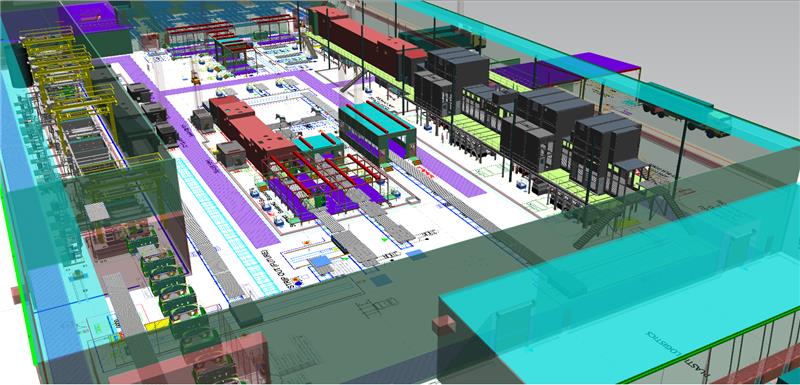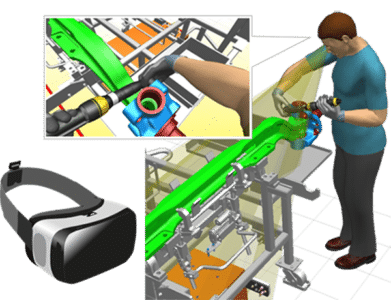How to Improve Your Business With Process Simulation and Optimization

It’s no secret that efficiency and competitiveness are important factors for most businesses. But, optimizing and streamlining processes can be extremely time-consuming and costly. That’s where process simulation comes in.
This concept revolves around using advanced software tools to create virtual models of existing processes. These models can help you analyze and test various scenarios without disrupting real-life operations. With these tools, you can quickly identify inefficiencies, predict potential problems, and make informed decisions about process improvements. This proactive approach not only enhances operational efficiency but also drives innovation, helping you stay ahead in a fast-evolving market.
Understanding Process Simulation

Process simulation tools create a detailed model of a specific process, incorporating various elements like resources, tasks, and workflows. The operators tasked with monitoring these tools input data that reflects actual or hypothetical conditions, and the process simulation software runs these simulations to show how these conditions affect the overall process.
These tools can simulate scenarios ranging from simple operational changes to complex, system-wide transformations, providing valuable insights into process efficiency, bottlenecks, and potential improvements.
So, for example, let’s say a manufacturing company wants to run a simulation to understand how to optimize its production line. The company can experiment with different configurations and workflows by creating a digital replica of the production process. They might simulate the impact of adding new machinery or changing the layout to reduce bottlenecks. The software allows them to see potential efficiency gains or issues before implementing them in real life, leading to more informed decision-making.
The Step-by-Step Process
1. Set Objectives
As with any experiment, you need to define what your goals are. Is it to identify bottlenecks? Test new layouts? Simulate a brand-new process? Clearly outline what you want to achieve in the simulation so that you have a benchmark for measuring success.
2. Gather Data
Collect the data needed to test your specific scenario. Data could include process times, resources, and workflow steps.
3. Model the Process
Use your software of choice to create a digital representation of your process. If you’ve never done this before, working with a consultant or process simulation expert is highly recommended.
To create a digital representation, you must:
- Input process elements for each step in the process, including:
- Task Details: What is being done and by whom, and how long will this task take to complete?
- Resources: These could include personnel, machinery, and materials.
- Process Flow: The sequence of operations and how each task is connected.
- Variability: Any fluctuations in process times or resource availability.
- Expected Outputs: What is expected to happen after each input?
- Set parameters (rules and constraints) for each process. Parameters could include capacity limits, working hours, or mandatory waiting times.
- Create a visual flowchart or use another tool to create a visualization of the process.
- Validate that the model accurately represents the real-world process. If the data isn’t precise, the results can’t be trusted.
4. Run Simulations
Input various scenarios and run simulations to analyze the outcomes. There is no limit to how many scenarios you can run. For the purpose of process simulation, it’s best to test as many outcomes as possible so you have more data to work with.
Analyze the Results
Examine the data to identify inefficiencies or opportunities for improvement—remember the goals and metrics you set from the beginning and use them during your analysis.
Implement Changes
Use insights gained from the simulation to make informed adjustments to your process. Always keep everyone these adjustments will impact in the loop. Provide proper training on how to maintain these adjustments and what the expectations are for the new, optimized process.
Refine
Nothing is ever perfect. Use your software to continuously refine your simulation model as you receive new data and insights.
Simulation Versus Modeling
You may hear the terms “process simulation” and “process modeling” used interchangeably. These are actually two different concepts.
Process modeling is when a static representation of a process is created. The focus is to identify and outline each step in the process and how each step is connected. Comparatively, a simulation adds dynamic elements to it. It involves running the model through various scenarios and conditions to predict what might happen if these scenarios and conditions were to play out in real life.
So, the model is the blueprint you need to bring your simulation to life, but a model on its own won’t provide you the information you need to optimize your process continually.
Primary Goals of Simulation
Many businesses have different reasons for developing a simulation. However, there are some common goals, including:
- Identifying Bottlenecks
- Optimizing Resources & Identifying Waste
- Improving Workflow/Process Efficiency
- Mitigating Risks
- Testing New Processes
- Reducing Costs
The Benefits of Process Simulation
Using process simulation software can provide many benefits, including, but not limited to:
Enhanced Safety
Process simulation enhances safety by allowing managers to test and analyze potential risks of new procedures or equipment. For example, a chemical manufacturing company can use simulation software to study the effects of changes in chemical mix ratios or temperature settings. By testing it in a virtual environment, managers can avoid the risk of workplace incidents and harming workers.
Effective Testing & Training
Process simulation is all about mitigating unnecessary risks. If you want to test a new process but you’re unsure of what will happen post-implementation, a simulation will help you test multiple scenarios to pinpoint any potential issues and find solutions to them before implementing the new process. Likewise, employees can interact with new processes in a virtual environment to get hands-on feedback, learn from their mistakes, and avoid real-life hazards.
Cost Savings
Although simulations can be challenging to develop, testing new scenarios without changing a real-life process or system saves costs associated with trial and error. If you’re investing in new machinery, wouldn’t you want to understand how that equipment might work in your process before purchasing it? If a simulation confirms that this machinery would cause more issues than improvements, you avoid the frustration of wasting time and money.
Improved Accuracy
Simulations use real data to provide accurate representations of processes, allowing managers to make data-driven decisions instead of running risky trials. The similarity between the simulation and the real-world process means that a greater range of attributes can be considered, allowing for greater accuracy during the real process. So, if you run a logistics company, you could run various scenarios that simulate different traffic patterns, delivery times, and vehicle capacities to determine the most efficient routes. Because the data is based on real life, you can make more confident decisions.
Take the Next Steps in Business Efficiency With Design Systems
Get the help you need from DSI. Founded in 1983, we’re a trusted industrial engineering and consulting firm offering a wide range of services and capabilities to businesses throughout the United States, Mexico, and Canada.
We have a team dedicated to process simulation that can help you test “what If?” scenarios, develop animated representations of your systems, and analyze potential process modifications.
Contact us today to learn more about our process simulation capabilities or to schedule a consultation with one of our experts.